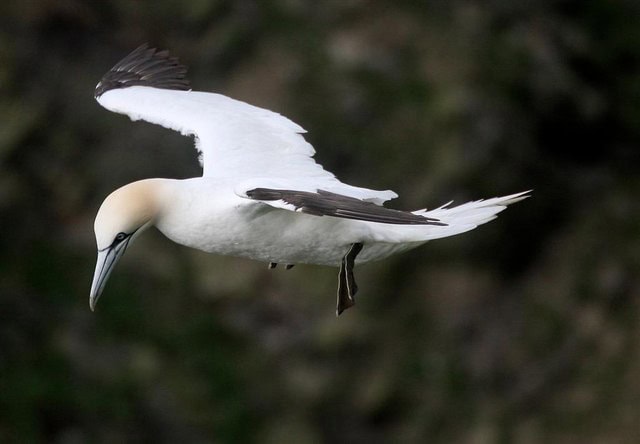According to recent reports, the Bass Rock population in the Firth of Forth is now the earth’s largest colony of gannets.
There are over 150,000 birds on the rock, located in East Lothian. This represents a population increase of 24 per cent since the last time its population was recorded in 2009.
The population of gannets were counted with computers and images from air.
The gannets travel from as far south as the coast of West Africa in the winter. They are expected to return in a few days.

Stuart Murray, who conducts independent wildlife counts worldwide, said:
“The colony was photographed from the air on 23 June 2014. Conditions were excellent, with no wind and a high cover of thick cloud which obscured the sun, reducing the glare from all these startlingly white birds. The images were later viewed on computer screens for counting and each occupied site was blocked-out as it was counted.
“Interestingly, the most dramatic increase is between the old lighthouse keepers’ garden and the summit of the Rock. We counted around 10,000 sites in this area compared with 6,500 five years ago.”
Sarah Wanless, from the CEH, said: “Our long-term research on North Sea seabirds aims to understand how species such as the gannet will cope with the rapid pace of environmental change. This is our fifth census of the Bass Rock in the last 30 years.
“It is particularly heartening to see them doing so well when so many other seabirds in Scotland appear to be in trouble, however, the Bass Rock is a small island and the gannets have now filled most of the available nesting habitat. The colony now has only very limited capacity for further increase.”
Tom Brock OBE, chief executive of the Scottish Seabird Centre, said: “Scotland is of international importance for seabirds and is home to over 60 per cent of the world’s population of Northern gannets.
“The figure of 75,000 sites is phenomenal especially when many apparently occupied sites will represent a breeding pair and their chick. I would expect that the total gannet population on the Bass in the breeding season will be well in excess of 150,000 birds.
“Every year the Bass Rock turns brilliant white with the sheer number of gannets crammed onto the Rock and not, as some people think, with their guano.
“While this is fantastic news we cannot ignore the fact that although gannet colonies are currently thriving other seabird species are not. This is a very complex issue however we know that gannets are able to travel further to forage for food – even as far as the coast of Norway.
“Many seabirds are now under threat and as a conservation and education charity we will continue to work in partnership with other organisations across Scotland to undertake further research and appropriate action, where we can, to conserve Scotland’s amazing wildlife for future generations.”

